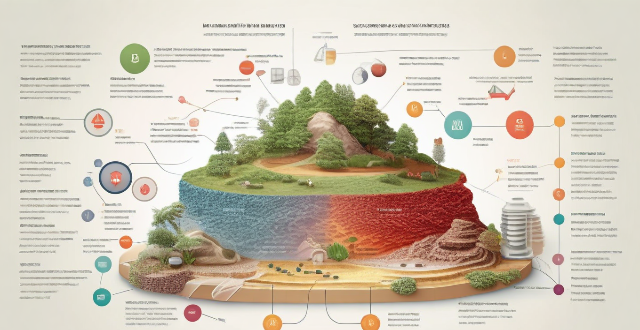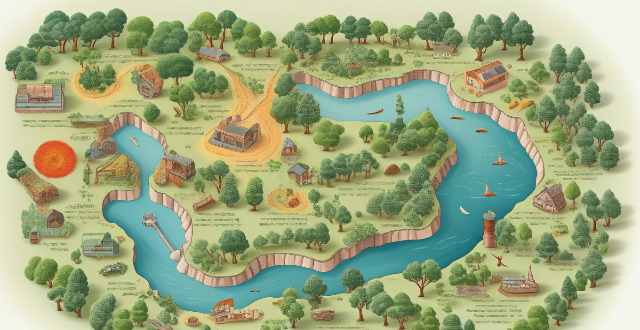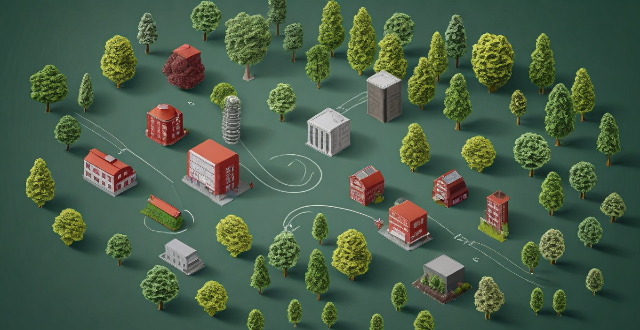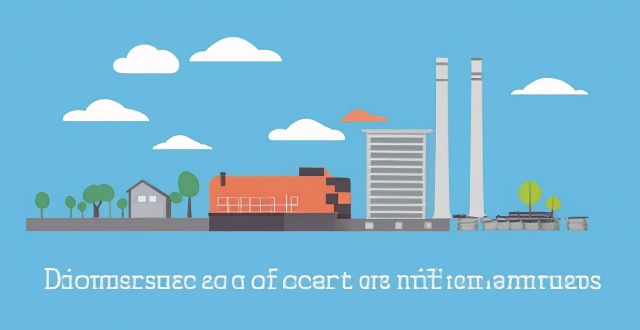Co2 Formation

How much carbon dioxide can be sequestered through different methods ?
The amount of carbon dioxide that can be sequestered varies significantly depending on the method and site conditions. Different methods include geological storage, ocean storage, and terrestrial storage, each with different potentials and technical requirements for CO2 sequestration. Geological storage is one of the most promising methods for long-term storage of CO2. It involves injecting and storing CO2 deep underground, typically in saline formations, depleted oil and gas reservoirs, and unmineable coal seams. The potential for CO2 storage in these geological structures is influenced by various factors such as the size, depth, and permeability of the formations, as well as the existence of impermeable cap rock to contain the CO2. Deep saline formations are porous and permeable rocks filled with saltwater that can store CO2 in various forms such as free gas, dissolved in brine, or mineralized after reacting with the host rock. Depleted oil and gas reservoirs offer another option for CO2 storage. After hydrocarbon extraction, these fields have remaining pore space that can be used to inject and store CO2. Unlike saline formations, they often have pre-existing infrastructure for drilling and injection, which can reduce the cost of storage. Unmineable coal seams, also known as coal bed methane (CBM) reservoirs, can store CO2 through a process called enhanced coal bed methane recovery. In this process, injecting CO2 into coal seams displaces methane, which can be recovered as a energy source while sequestering the CO2. Ocean storage involves dissolving CO2 in seawater at great depths where it remains isolated from the atmosphere. This method relies on either natural processes like ocean upwellings or engineering techniques such as direct injection or pipeline delivery systems. While the exact storage capacity is difficult to estimate due to complex ocean dynamics, studies suggest that the global ocean could theoretically absorb thousands of gigatons of CO2. Terrestrial storage focuses on enhancing the natural processes by which ecosystems capture and store carbon. This includes reforestation, afforestation, and soil management practices that increase carbon stocks in vegetation and soils. The potential for terrestrial storage is significant but varies widely depending on factors like climate, soil type, and land use practices. Globally, it is estimated that forests alone could potentially sequester hundreds of gigatons of CO2 over several decades.

How long will it take for carbon sequestration to have a noticeable effect on atmospheric CO2 levels ?
Carbon sequestration is a process that aims to reduce atmospheric CO2 levels by capturing and storing carbon dioxide. The effectiveness of this process depends on various factors such as the rate of carbon sequestration, global emissions reduction efforts, and the health of natural carbon sinks. In the short term, it is unlikely that carbon sequestration alone will have a noticeable effect on atmospheric CO2 levels. However, in the medium to long term, if significant investments are made in scaling up carbon sequestration technologies and reducing global CO2 emissions, some noticeable effects may begin to emerge. These could include slower rates of CO2 accumulation, improved air quality, reduced global warming, and restoration of natural ecosystems. Therefore, sustained investments in carbon sequestration and other climate mitigation strategies can help achieve long-term reductions in atmospheric CO2 levels and mitigate the effects of climate change.

Is carbon offsetting effective in reducing greenhouse gas emissions ?
Carbon offsetting is a strategy to compensate for CO2 emissions by investing in projects that reduce, avoid, or absorb an equivalent amount of CO2 elsewhere. While it can provide immediate action and support clean projects, there's a lack of standardization and potential for perverse incentives. Effectiveness depends on project quality and organizational integrity. It should be part of a broader strategy, not seen as a silver bullet.

What are fossil fuels and how are they formed ?
Fossil fuels are hydrocarbons derived from prehistoric organisms, including coal, oil, and natural gas. Their formation involves prolonged periods of heat and pressure, converting organic material into energy-rich deposits. The extraction and use of these fuels contribute to environmental issues such as climate change and pollution.

What is carbon capture and how does it work ?
Carbon capture, a technology to reduce CO2 emissions from industrial processes and power generation facilities, comprises three main types: post-combustion, oxy-fuel combustion, and pre-combustion. Each method captures CO2 differently, and the captured gas can be stored or used for other purposes. Carbon capture offers benefits such as reducing greenhouse gas emissions and supporting the transition to a low-carbon economy but faces challenges like high costs and energy requirements.

What role does deforestation play in climate change ?
The Role of Deforestation in Climate Change Deforestation contributes to climate change by reducing the Earth's capacity to absorb CO2 and releasing stored carbon back into the atmosphere. This process exacerbates the greenhouse effect, leading to global warming. Key points include: - Loss of Carbon Sinks: Trees act as natural carbon sinks, capturing and storing CO2. When forests are destroyed, these carbon sinks are lost. - Release of Stored Carbon: Deforestation releases the carbon stored in trees back into the atmosphere, increasing atmospheric CO2 levels. - Biodiversity Loss: Forests are home to a vast array of species. Deforestation leads to habitat destruction and loss of biodiversity. - Soil Erosion and Degradation: Trees help maintain soil quality. Without trees, soil can become degraded, reducing its ability to store carbon. - Albedo Effect: Forests have a darker surface than bare ground, meaning they absorb more sunlight and heat. When forests are replaced with lighter-colored surfaces like grasslands or croplands, the albedo (reflectivity) of the land increases. - Feedback Loops: Deforestation can create feedback loops that exacerbate climate change. For example, as temperatures rise due to increased CO2 levels, it becomes harder for some forests to survive, leading to further deforestation and more CO2 emissions. To combat the role of deforestation in climate change, strategies such as reforestation and afforestation, sustainable forestry practices, protection of intact forests, promotion of agroforestry, and public awareness and education can be employed.

What are some of the most effective methods for carbon sequestration ?
Carbon sequestration refers to the process of capturing and storing carbon dioxide (CO2) from the atmosphere to mitigate its effects on climate change. There are several effective methods for carbon sequestration, including afforestation and reforestation, soil carbon sequestration, biochar production, ocean fertilization, and direct air capture (DAC). Afforestation and reforestation involve planting new trees or replacing existing ones in deforested areas, while soil carbon sequestration involves increasing the amount of organic matter in soil by adding compost, manure, or other organic materials. Biochar production involves creating a type of charcoal made from plant materials that is added to soil to improve its fertility and water-holding capacity. Ocean fertilization involves adding iron or other nutrients to the ocean to stimulate the growth of phytoplankton, which absorb CO2 through photosynthesis. Direct air capture involves using machines to capture CO2 directly from the atmosphere and then store it underground or in other long-term storage solutions.

Can carbon capture help us achieve our climate goals ?
Carbon capture and storage (CCS) has the potential to mitigate climate change by capturing CO2 emissions from power plants and industrial processes, preventing them from entering the atmosphere. The captured CO2 can be transported to a suitable location for long-term storage or used for enhanced oil recovery. However, CCS technology faces challenges such as high costs, energy losses, and public acceptance issues. While it is not a silver bullet, CCS could play a valuable role in reducing greenhouse gas emissions when integrated with renewable energy strategies and energy efficiency measures.

What is the current status of carbon sequestration projects around the world ?
Carbon sequestration projects are aimed at reducing greenhouse gas emissions by capturing and storing carbon dioxide. These projects include geological storage, ocean storage, and terrestrial storage methods. Geological storage involves injecting CO2 into underground formations, while ocean storage involves injecting it into the deep ocean. Terrestrial storage uses vegetation and soil to sequester carbon through reforestation and improved forest management. These projects have been implemented in various countries worldwide, with notable examples including the Petra Nova project in the United States, the Sleipner project in Norway, and the Amazon Forest Conservation Program in Brazil.

What are some examples of carbon offset projects ?
Carbon offset projects are initiatives designed to reduce or offset the emission of carbon dioxide (CO2) and other greenhouse gases into the atmosphere. These projects aim to mitigate the impacts of climate change by investing in activities that remove CO2 from the atmosphere or prevent its release in the first place. In this guide, we will explore some examples of carbon offset projects and how they contribute to the global effort to combat climate change.

Are diesel hybrid vehicles better for the environment than regular diesel vehicles ?
Diesel hybrid vehicles, which combine a diesel engine with an electric motor, have the potential to be more environmentally friendly than regular diesel vehicles. They can offer improved fuel economy and reduced emissions of CO2 and particulate matter. However, the production of batteries for hybrid vehicles can result in higher upstream CO2 emissions, and advanced emission control systems are needed to significantly reduce NOx emissions. A comprehensive lifecycle analysis that takes into account all factors would provide a clearer picture of the environmental benefits of diesel hybrid vehicles compared to regular diesel vehicles.

How is ocean acidification due to carbon dioxide absorption affecting the health of fish stocks ?
**Ocean Acidification and Its Impact on Fish Stocks** The absorption of carbon dioxide (CO2) from the atmosphere into the ocean causes ocean acidification, leading to a decrease in pH levels and increased acidity. This phenomenon poses significant threats to marine life, particularly fish stocks, through various effects: 1. **Changes in Calcium Carbonate Availability:** As the ocean becomes more acidic, there is less calcium carbonate available for shell formation in many fish species, affecting their growth and survival, especially during early developmental stages. 2. **Altered Food Web Dynamics:** Acidification can cause changes in plankton communities, disrupting the food chain and affecting predator-prey relationships, potentially leading to overpredation or starvation among certain fish species. 3. **Behavioral Changes:** Increased acidity can interfere with sensory systems in fish, affecting their ability to find food, avoid predators, and navigate. It may also alter reproductive behavior, leading to reduced breeding success. 4. **Energy Allocation:** Acidification increases metabolic costs associated with maintaining physiological functions, reducing resources available for growth, reproduction, and other essential processes. It can also weaken the immune system, making fish more susceptible to diseases and parasites. Understanding these effects is crucial for developing strategies to mitigate the impacts of ocean acidification and protect marine ecosystems.

How do industrial processes contribute to greenhouse gas emissions ?
Industrial processes significantly contribute to greenhouse gas (GHG) emissions, which are a major driver of climate change. These contributions come from various sources including energy consumption, manufacturing processes, agricultural industries, construction industries, and waste management. Mitigation strategies such as improving energy efficiency, optimizing processes, implementing carbon capture and storage technologies, and enforcing policy and regulation can help reduce these emissions.

What are the environmental impacts of burning fossil fuels ?
The environmental impacts of burning fossil fuels are wide-ranging and severe, affecting not only the natural world but also human health and well-being. These impacts include air pollution, water pollution, land degradation, climate change, and health effects on humans and wildlife. Burning fossil fuels releases sulfur dioxide, nitrogen oxides, carbon monoxide, and particulate matter into the air, causing respiratory problems, smog formation, and lung damage. Water pollution from oil spills and acid mine drainage harms marine life and contaminates water sources. Land degradation from mountaintop removal mining and strip mining destroys habitats and contaminates water sources. Burning fossil fuels also releases large amounts of greenhouse gases like carbon dioxide and methane, contributing to global warming. Health effects include respiratory problems, cardiovascular disease, and cancer. Transitioning away from fossil fuels towards renewable energy sources is essential for mitigating these impacts and ensuring a sustainable future for our planet.

How does carbon sequestration relate to other climate change mitigation strategies ?
Carbon sequestration is a crucial strategy in the fight against climate change. It involves the capture and storage of carbon dioxide (CO2) from the atmosphere, preventing it from contributing to global warming. This process can be natural or artificial, and it plays a significant role in reducing greenhouse gas emissions. Natural carbon sequestration occurs through processes such as photosynthesis, where plants absorb CO2 from the atmosphere and convert it into organic compounds. This process helps to remove CO2 from the atmosphere and store it in plant tissues, which can eventually become part of the soil when the plants die and decompose. Examples of natural carbon sequestration include forests, oceans, and wetlands. Artificial carbon sequestration involves human intervention to capture and store CO2. This can be done through various methods, including direct air capture, carbon capture and storage (CCS), and enhanced rock weathering. Examples of artificial carbon sequestration include direct air capture technology, CCS systems, and enhanced rock weathering techniques. Carbon sequestration is just one piece of the puzzle when it comes to mitigating climate change. Other strategies include reducing greenhouse gas emissions, increasing energy efficiency, and transitioning to renewable energy sources. Reducing greenhouse gas emissions is essential for slowing down the rate of climate change. This can be achieved through various means, such as using energy-efficient technologies, promoting public transportation, and implementing policies that encourage sustainable practices. Increasing energy efficiency helps to reduce the amount of energy needed to power our homes, businesses, and transportation systems. This can be done by upgrading buildings with better insulation, using more efficient appliances, and improving industrial processes. Transitioning to renewable energy sources, such as solar, wind, and hydroelectric power, is crucial for reducing our dependence on fossil fuels and decreasing greenhouse gas emissions. Governments and individuals can support this transition by investing in renewable energy infrastructure and adopting sustainable practices in their daily lives.

How do fuel vehicles contribute to air pollution ?
Fossil fuel vehicles release harmful gases and particulate matter, contributing to air pollution, climate change, and health issues. Measures to reduce their impact include improving fuel quality, enhancing vehicle efficiency, and promoting alternative transportation methods.

What is the relationship between greenhouse gas emissions and air pollution ?
The article discusses the relationship between greenhouse gas emissions and air pollution, highlighting their significant impacts on the environment and human health. It explains that many sources of greenhouse gas emissions also produce air pollutants, and efforts to reduce one often result in reduced levels of the other. The article also notes that climate change caused by greenhouse gas emissions can exacerbate air pollution problems, leading to more frequent heat waves, droughts, and heavy rainfall events that affect air quality. Both phenomena have negative impacts on human health, causing respiratory problems, heart disease, and other health issues. To mitigate these challenges, the article suggests transitioning to renewable energy sources, improving energy efficiency, promoting sustainable transportation, implementing stricter environmental regulations, and investing in research and development of new technologies and practices.

What is the relationship between air pollution and climate change ?
The text discusses the relationship between air pollution and climate change, highlighting their common sources, overlapping impacts on the environment and human health, and complex interactions. It emphasizes the need for strategies that address both issues to achieve a healthier and more sustainable future.

What is carbon capture technology and how does it work ?
Carbon capture technology is a set of methods aimed at reducing CO2 emissions from power plants, industrial processes, and other sources. The main types are post-combustion capture, oxy-fuel combustion, and pre-combustion capture, each with its specific techniques and challenges. While these technologies offer significant potential in the fight against climate change, they face economic and logistical barriers such as high costs and the need for safe storage solutions. Ongoing research seeks to improve efficiency and reduce costs, making carbon capture an increasingly viable solution in achieving net-zero emissions targets.

What is the significance of carbon capture and storage technologies ?
The text discusses the importance of carbon capture and storage (CCS) technologies in mitigating climate change, enabling clean energy transition, and supporting industrial processes. It highlights three main methods of capturing CO2: post-combustion capture, oxy-fuel combustion, and pre-combustion capture. The text also describes various ways to store CO2, such as geological storage, ocean storage, and enhanced oil recovery (EOR). Additionally, it mentions the potential for carbon utilization through sequestration, synthetic fuels production, and industrial applications. However, the text acknowledges challenges such as cost, energy penalty, public acceptance, and regulatory frameworks that need to be addressed for successful implementation of CCS projects.

What is carbon sequestration and how does it work ?
Carbon sequestration is a process that aims to reduce the concentration of carbon dioxide (CO2) in the atmosphere by capturing and storing it. This can be achieved through various methods, including afforestation, soil carbon sequestration, bioenergy with carbon capture and storage (BECCS), direct air capture (DAC), ocean carbon sequestration, and enhanced weathering. The benefits of carbon sequestration include mitigating climate change, improving soil health, restoring ecosystems, and creating economic opportunities. However, large-scale implementation of carbon sequestration projects faces challenges, and continued research and investment are necessary to achieve global climate goals.

How do greenhouse gas emissions contribute to ocean acidification ?
The article discusses the role of greenhouse gas emissions, particularly carbon dioxide (CO2), in causing ocean acidification. It explains how CO2 gets absorbed by seawater through a process called "carbon sequestration," which leads to changes in the chemistry of the ocean's surface waters and results in decreased pH levels. The article also highlights the negative impacts of ocean acidification on marine ecosystems, including damage to calcifying organisms and disruption of food webs. To mitigate these effects, it suggests reducing greenhouse gas emissions through various means such as transitioning to renewable energy sources, improving energy efficiency, promoting sustainable land use practices, and implementing carbon capture and storage technologies.

What are some examples of successful carbon capture projects ?
This text provides a topic summary of successful carbon capture projects, including the Boundary Dam Power Plant in Saskatchewan, Canada; Petra Nova Carbon Capture Project in Texas, USA; Quest Carbon Capture Project in Alberta, Canada; Schwarze Pumpe Power Plant in Brandenburg, Germany; and Lacq CCS Pilot Project in Aquitaine, France. Each project captures CO2 emissions from industrial processes and uses them for enhanced oil recovery or storage in depleted gas fields, reducing greenhouse gas emissions by up to 90%.